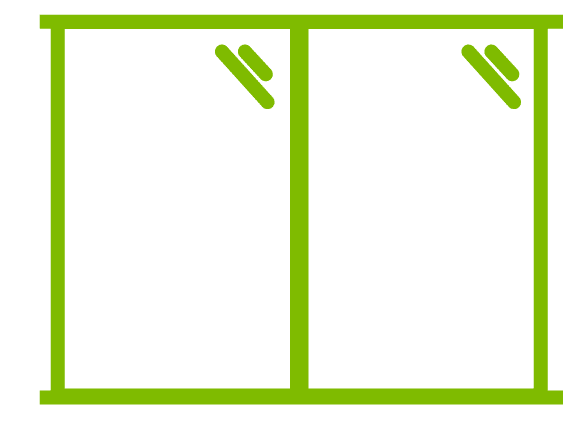A well-constructed building keeps the elements out and conditioned air in. But even with rigorous maintenance, buildings naturally degrade and air leaks can form without your knowledge. It’s impossible to identify all the possible air leaks in a large commercial building on your own, and you don’t have to try. Air leak testing (or air barrier testing) efficiently detects gaps before they compromise your building’s comfort and safety.
At Building Envelope Allies, we provide comprehensive building diagnostic services and air leakage testing. We work with building owners to identify issues, so they can get fixed before they get worse.
If you have a sneaking suspicion that your building is leaking air, here’s what you need to know.
Signs that your building needs air leak testing
The tiniest gaps in a building’s exterior can leak air and let water inside, and they’re easy to miss in routine visual inspections. Instead of looking for leaks, look for these common signs that your building isn’t airtight:
1. It’s difficult to control indoor temperatures
Commercial building HVAC systems are designed to condition the air equally throughout the entire space. But if your building is leaking, the conditioned air escapes and creates temperature imbalances.
Some parts of the building might be too cold, while other parts feel uncomfortably hot. Another sign of inefficiency is significant temperature fluctuation inside the building when the temperature outside is particularly cold or hot.
2. Windows collect condensation, frost, or mildew
Windows and doors are some of the most common spots for air (and water) leaks. If a window or door frame is leaking air, you’ll notice condensation, or “sweat,” on the glass. The area may stay moist, frost when temperatures drop, and eventually grow mildew.
In more serious cases, you might notice mildew growing on ceilings, walls, and floors too. Unfortunately, condensation and mildew don’t just make the building feel damp and smell musty — they can also pose health hazards.
3. Ceilings and walls show water stains
Where air leaks out, water often leaks in. Water leaks can create visible stains on ceiling tiles and make the paint on walls peel or flake off. Unfortunately, by the time you notice these visible signs, the leak has probably been there for quite a while.
4. Appliances and equipment are rusting
Rust is another possible sign that an air leak is allowing too much moisture into your building — particularly in the ceilings and basement areas. Look for rust on metal fixtures like pipes, air conditioning units, furnaces, water heaters, and other appliances.
5. You’re paying high utility bills
Finally, look to your utility bills to help you determine if your commercial building is leaking air. Utility rates are increasing across the country, but if you’ve noticed higher heating and cooling costs that are unrelated to the economy, it may be a sign that your system is leaking conditioned air outside.
How air leak testing works
Air leakage testing identifies gaps in your building exterior where air and water may infiltrate. Once you know where the leaks are, you can take corrective action. Fixing air leaks can make your building more comfortable, stop building degradation, reduce maintenance costs, and improve energy efficiency.
If you’re concerned that your commercial building has an air or water leak, our building diagnostics team at Building Envelope Allies can help. We perform air leak testing to rigorous ASTM standards, including:
We use air barrier and blower door testing to measure the amount of air leaking from commercial buildings, windows, and doors. Then, we provide a report with our findings, so you can make any necessary repairs to improve your building’s performance.
Find out how Building Envelope Allies can help you stop commercial building air leaks. Request an air leakage testing proposal today.







